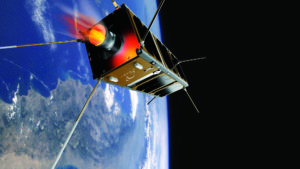Nano-satellite for emergency: D-SAT mission has been launched

SatAlert, designed in collaboration with CNIT (University of Florence Research Unit), is an in-orbit validation of the Multiple Alert Message Encapsulation (MAMES) protocol, defined by ETSI (European Telecommunications Standards Institute). MAMES is an extensible multiple alert message encapsulation protocol for transporting differently formatted alert messages over satellite links. It guarantees the timely distribution of alert messages to the intended audience of the incident affected area even in critical situations (e.g.: network resource limited contexts).
D-Sat will collect MAMES emergency messages sent from a ground station, store them onboard, and re-broadcast them to national public safety entities upon receiving a trigger command. This experiment will validate a typical emergency scenario where civil defense agencies need a means to broadcast instructions in areas affected by natural disasters when the ground telecommunication infrastructures have been damaged.
These emergency scenarios are becoming increasingly common, given the tight correlation between climate change and extreme weather conditions like hurricanes, wildfires, tornadoes, extreme rainfalls, and floods.
D-SAT has been launched today morning at 6 o’clock from the Satich Dhawan Space Center in India and will remain in orbit a month: CNIT unit of the University of Florence has been deeply involved in the definition and development of research activities; particularly, the researchers involved in SatAlert Experiment definition and development are: Dr. Luca Simone Ronga, Dr. Renato Pucci, Dr. Sara Jayousi, Prof. Enrico Del Re and Dr. Simone Morosi.
